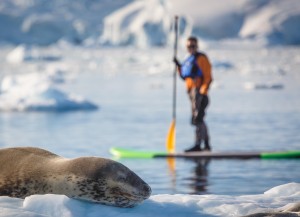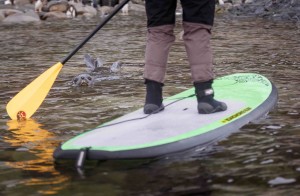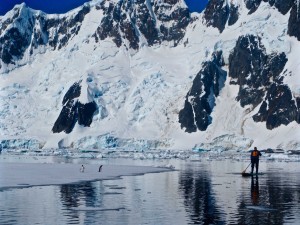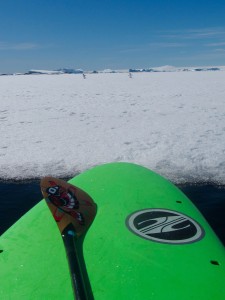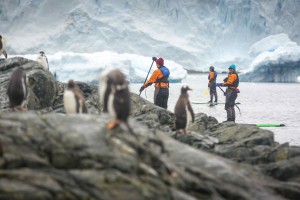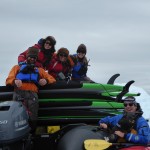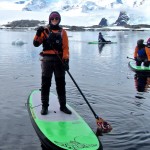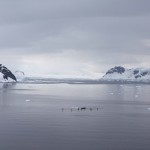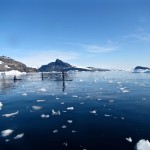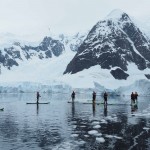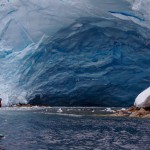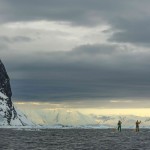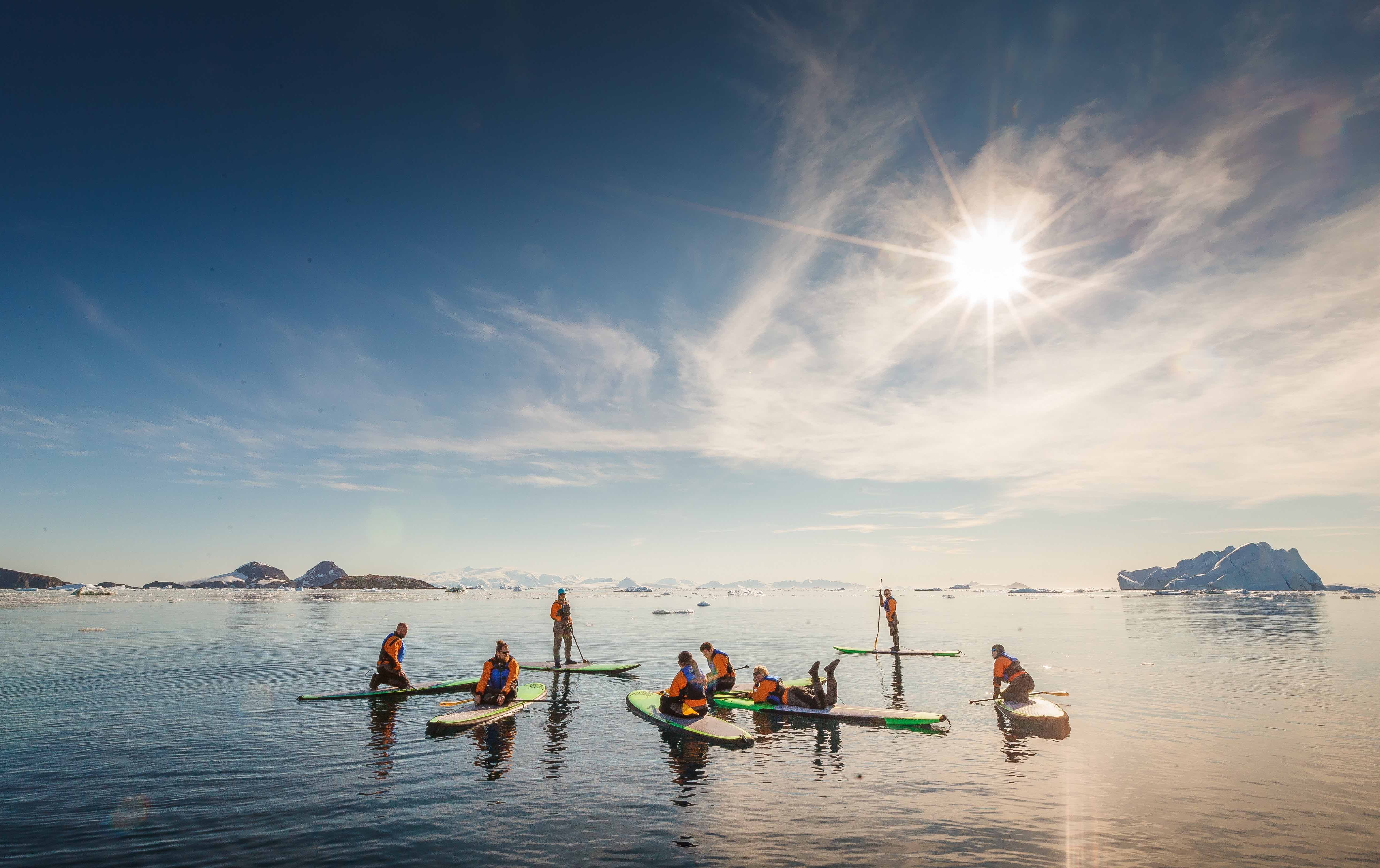
A Stand Up Paddleboard is a great way to get to places that are less travelled and on SUPboarder we’re lucky to see the world through other people’s words and images, experiencing places that we might not have thought about visiting. How about SUPing Antartica for example?! Meghan Roberts explains that’s its not always a bleak, cold and inhospitable place to go and hang out with penguins;

Before we leave the Beagle Channel in Argentina for Antarctica, I make sure my dresser and table in my cabin are cleared off. I shove some things into my drawer and secure it closed with Duct tape; Other items I know I’ll use in the next two days I put on the floor. This is what we call “Drake Proofing.” The Drake Passage is an infamous 600-mile stretch of ocean, known for being some of the roughest seas in the world. It is the shortest way to get to Antarctica by boat, taking us about two days to cross it. On Drake days I enjoy standing up at the Bridge, watching. I become completely mesmerized by the crashing waves, like staring into a campfire. The dark swells slam against the side of the ship dispersing white splashes into the air and spreading a beautiful turquoise whitewash behind it. The ship rolls back and forth relentlessly with slight jolts breaking up the rolls as the waves crash into the ship, causing me to hold onto the counter as I watch. It is hard to believe, while in the rough seas of the Drake, that I will soon be in Antarctica, with glassy calm conditions, stand up paddling.
Arriving in Antarctica never disappoints. I get my first reminder of where I am going at the sight of Icebergs floating in the Ocean soon after we cross the Antarctic convergence. The Antarctic convergence marks the beginning of the Southern Ocean and has a sudden temperature drop of 3-5 degrees. Each time I see land for the first time I can’t help but think of early explorers and what they must have felt once they saw land after navigating through the rough, uncharted waters. The sights are breathtaking. It is incredible that a land with such a lack of colours can be so absolutely colourful. I don’t think I have ever noticed how many different shades of black, grey and white there are. The second we get to the rugged, rocky, black mountains, outlined with snow, with glaciers running down their valleys, I get excited to get off the ship and explore the waters on my paddle board.
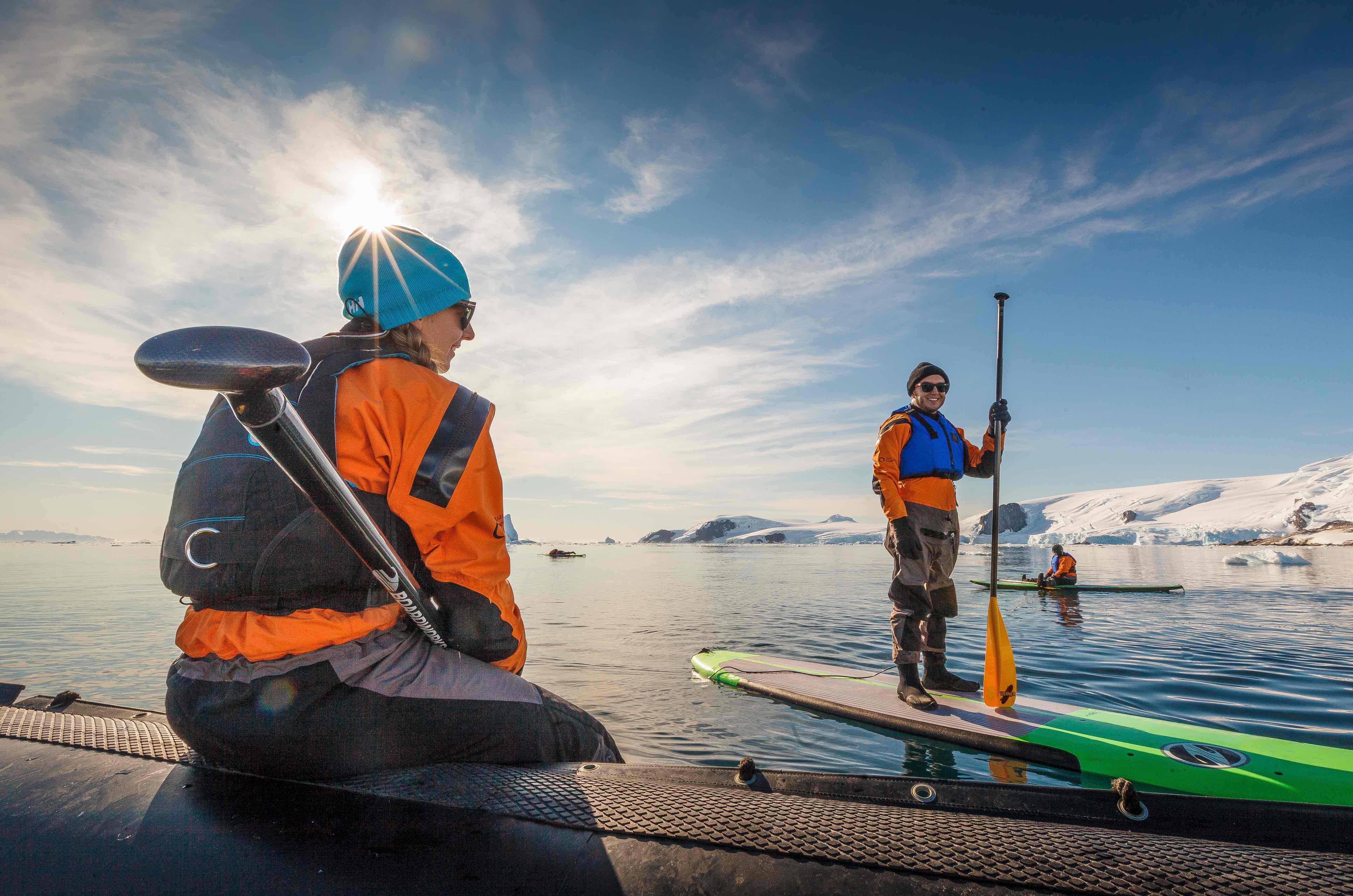
Weather in Antarctica is very unpredictable and can change drastically without warning. There are forecasts, but they are often unreliable. I start my mornings off with a cup of coffee at the Bridge. I sit for about 45mins looking at the water, clouds, and wind. I’m trying to assess if the conditions will be suitable for a paddle. In a place so remote, it is important to make a good assessment before paddling. If it looks like a system may be coming through, it is best to hold off on your paddle.
People’s perception of Antarctica is often of an ice cold, windy, miserable place. At times, it is this, but in it’s summer months it can be very pleasant. I have had several above freezing, bluebird sky, sun shining hot days, where the sea is a big glassy mirror. These are my favorite days to paddle. I load the boards from the Heli Deck onto a zodiac, held suspended in the air by a crane. The zodiac driver picks me up at the side door and we zip away from the ship to find a remote protected area to paddle; away from the ship, away from people, hundreds of miles from civilization.
SUP Wildlife Encounters
My favorite place to paddle is Pleneau Bay. It is a bay just outside the Limaire Channel. The zodiac takes us to our spot, maneuvering through the maze of icebergs over to the northern side of Pleneau Island. We search for an open spot in the bay, free of ice, so we can launch our boards. Paddling here is amazing on the senses; the crisp air bites at my face and hands but the warmth of the sun sooths the skin. The ice sounds like Rice Crispy cereal, constantly crackling and popping as air escapes from it. Every direction my head turns there is some of the most incredible sites. To my left, Pleneau Island is alive with Gentoo penguin, Cormorant, and Skua. The rocky island slopes down to the water and I can paddle right to the land to visit the wildlife. Behind me are the towering mountains of Booth Island; a giant, rocky, dark wall, stretching over 900 meters into the sky. The white, shining, glaciers running down Booth Island, to the waters edge, contrast against the dark rock. To my right and in front of me is the maze of icebergs and sea ice.
The icebergs add a unique bit of colour to Antarctica; shinning a bright, vibrant blue. Some ‘bergs have slight highlights of blue through their cracks and crevasses, while others radiate blue throughout. The sea ice isn’t as colourful, but just as beautiful. It stretches out flat across the top of the water and has several seals and penguins lounging about on it. I like to paddle the nose of my board onto the sea ice, lie down, and watch the seals scratch their head with their flippers and the penguins dive into the water, off the ice.
Paddle boarding is one of the most intimate ways to explore Antarctica. On a board, you get the opportunity to maneuver to different places than on a ship or zodiac. You don’t have a motor or a ton of people to cause the wildlife to be alert. It is you and a few others, on boards, peacefully fitting in with your surroundings.
Words – Meghan Roberts
Images – David Merron unless otherwise stated.
About the Author:
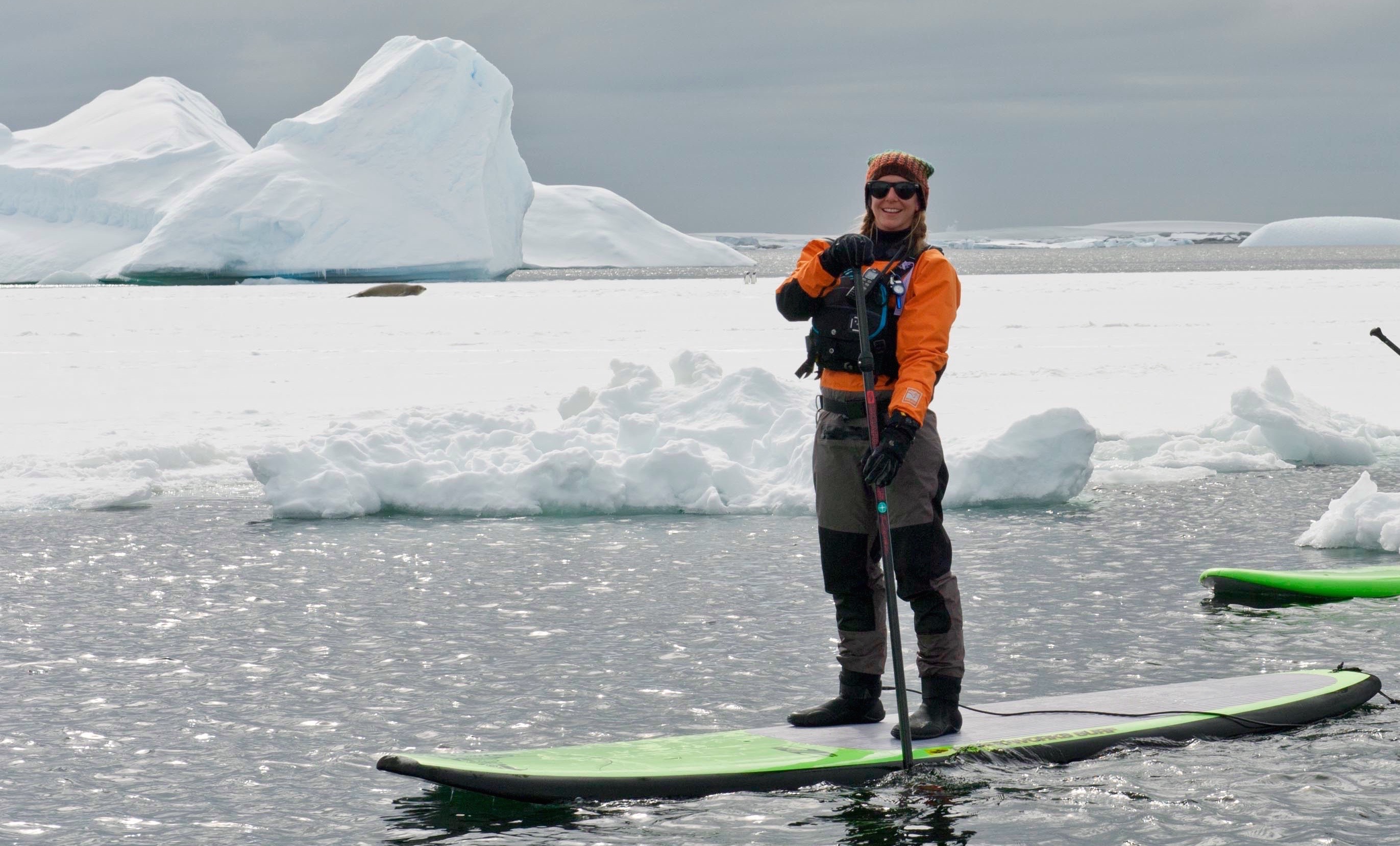
Meghan has worked in the outdoor industry since 2005 working in Hong Kong, New Zealand and throughout the USA. As whitewater rafting guide in West Virginia she started SUP river surfing around 2013 and was offered the chance to run a SUP program in Antartica with Quark Expeditions that was impossible to turn down. She is the owner of Mountain Surf Paddle Sports LLC and you can read more about her and her exploits here and on Facebook here.
